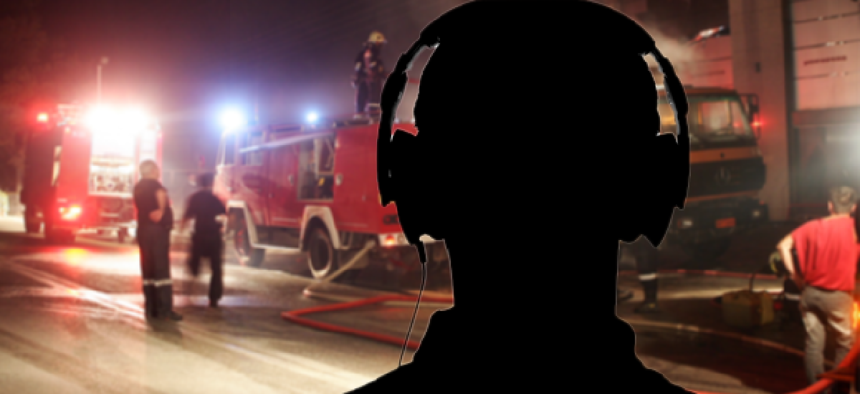Parsing the 'chaos' of emergency communications


Connecting state and local government leaders
New technology from GlobalFlyte allows users to set up an 3-D audio space to boost comprehension of radio communications.
Emergency response commanders pull order from fires, natural disasters and shootings, all the while sharing information across multiple radio channels.
“We call it chaos,” said Ronda Mosley, the public safety relations director for GlobalFlyte. “It’s just utter chaos what they’re listening to.”
GlobalFlyte, a public-safety technology firm, is currently testing its Multi Modal technology in Fairborn, Ohio. The solution tries to untangle this communication knot and make it more digestible for field commanders responding to an incident.
The technology was licensed from the Air Force Research Laboratory, which developed it to address the constant repetition, wasted time and missed critical data in radio communications resulting from several combatants were talking at once. It allows the user to listen to multiple radio channels through one pair of headphones by separating them spatially.
“If I have a dispatch channel I want to monitor, I have a tactical channel I want to monitor and I have a fire channel I want to monitor,” they can be separated so they sound as though they’re coming from different locations, GlobalFlyte President and COO Tim Shaw explained.
One channel can sound like it’s coming from in front of the listener, while another can be allocated to the left and another to the right. The AFRL found that separating the audio channels in this way resulted in a 40 percent increase in comprehension.
Comprehension can jump by 70 percent if there is also real-time transcription of radio traffic, the AFRL found. But the accuracy of the transcriptions must be quite high – also 70 percent -- to achieve that level of understanding. And GlobalFlyte hasn’t gotten it to that point yet; it’s currently at 45 percent accuracy for its transcription, Shaw said. The company is improving the accuracy by using a dataset of thousands of hours of transcribed first responder communications to build and train a language model.
“The transcription right now is the one area we’re still working with AFRL on,” he said.
GlobalFlyte uses a cloud-based web interface and doesn’t require any software or new hardware. When users log in, they indicate whether they're from the fire, police, public works or another department and then can either create an incident or go to an archived or templated event. The Action Map service incorporates GIS data layers and tracks the location of all responders. Further geographical information, like standoff distances for bomb threats, is automatically added by selections in dropdown boxes.
GlobalFlyte is working with Fairborn on loading preplanned events, like responses to an active shooter, so they can be selected as options for new incidents. This means plans can be sent out with a few clicks.
The company is also working on automatically providing after-action reports from the transcriptions, Shaw said, which will simplify paperwork for commanders. Additionally, commanders can use after-action reports from successful missions as a training tool, he said.
Commanders use the web interface commanders, but the Minute Man mobile application is designed for patrol officers or firefighters in the field to provide intel to the commander or each other, Shaw said.
This summer, GlobalFlyte plans to release Live Eye, which will allow video feeds from drones to be streamed through their software, he said.
For now, though, the company is looking to the first responders in Fairborn to provide feedback on how to improve the product suite. GlobalFlyte is planning a nationwide rollout focused on small and mid-sized localities in the coming months, Mosley said.
Fairborn Police Department Capt. Terry Bennington told the Dayton Daily News that his department is looking to see what benefit they get from the product.
“We’re basically going to try it out,” Bennington told the Daily News. “I’m sure whatever we can take advantage of and test for we’re going to do that.”




